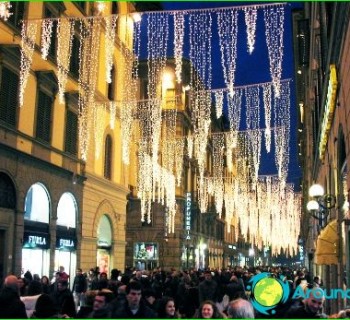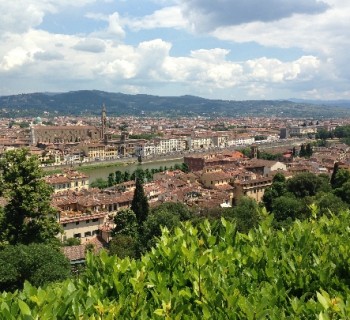Florence history
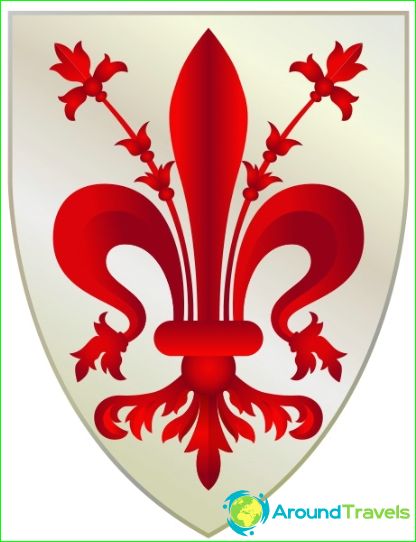
Cozyly located on the picturesque banks of the Arno River, Italian Florence is the administrative center of the Tuscany region and one of the oldest and most beautiful cities in Europe.
Florence was founded in the 1st century BC. by the Romans as a settlement for the soldiers-veterans of the Roman army and was called in those days Florence, which means "blossoming". The city was built on the principle of a military camp, and, like most ancient Roman settlements, had a rectangular shape and a grid of roads intersecting each other at right angles. The intersection of the main streets of Roman Florence, Cardo and Decumanos, was located on the site of the modern Republic Square..
Since the city was located on the so-called Cassian road (the main route from Rome to the north), and given the fertile valley of the Arno River, Florence developed rapidly and soon became an important trade center. In the 3rd century A.D. the Roman emperor Diocletian made Florence the capital of the province of Tuscia, and already in the 4th century the city became the seat of the bishop.
In the following centuries, Florence found itself at the epicenter of the war between the Byzantines and the Ostrogoths: the city fell into decay, and the population was greatly reduced. Relative peace was established only with the arrival of the Lombards in the 6th century. In 774, Florence was conquered by Charlemagne and became part of the Duchy of Tuscany..
Middle Ages and modern times
The real heyday begins for Florence as early as 1000, when the Margrave Hugo made the city his residence. From the same period, the so-called "Golden Age of Florentine Art" traces its history, which in the future had a tremendous impact on the development of the entire European culture. The Tuscan dialect later formed the basis of the modern Italian language..
In 1115, Florence became the capital of the independent Florentine Republic, actively built and developed, continuing to build up its economic power and influence. Soon, Florence already occupies one of the key positions of the political Olympus of medieval Italy, and its golden florin is one of the most stable European currencies..
By the 14th century, the economy of Florence reached an unprecedented rise, and the city became the leading center of the Italian Renaissance, having inscribed such legendary names as Dante, Leonardo Da Vinci, Petrarca, Michelangelo, Machiavelli, Boccaccio, etc. in world history. The Medici dynasty, which for centuries patronized the most talented people of its time and headed the Florentine Republic in 1434, had a huge impact on the cultural flourishing of Florence..
In the 18-19 centuries (after the suppression of the Medici family), Florence was for some time under the influence of the Austrian crown, and then France. In 1861, Florence, part of Tuscany, became part of the Kingdom of Italy. From 1865 to 1871 the city was the capital of Italy and during this period underwent a number of dramatic changes in its architectural appearance. Unfortunately, in connection with the modernization of the historic center of Florence, many medieval buildings were destroyed..
Today Florence is an important economic, industrial and cultural center of Italy, and is also included in the top 50 recognized capitals of world fashion. An entertaining centuries-old history and an abundance of cultural, architectural and historical monuments annually attract many tourists to Florence from all over the world. Among the most interesting and iconic sights of Florence, which are definitely worth a visit, it is worth noting the Palazzo Vecchio, the Basilica of San Miniato, the Cathedral of Santa Maria del Fiore and, of course, the Uffizi Gallery, which is rightfully considered one of the best art museums in the world..
Pictures of Florence
Coat of arms of Florence
Florence mid 16th century
Cathedral of Santa Maria del Fiore
Basilica of Santa Croce
Palazzo Vecchio
Ponte Vecchio bridge
Uffizi Gallery
Palazzo Pitti
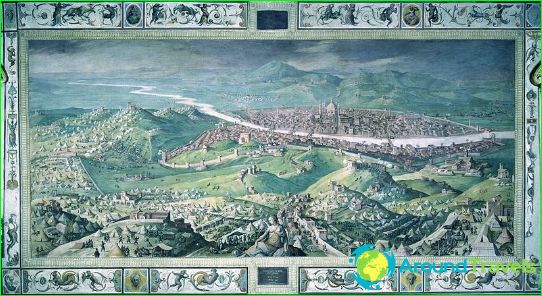 Florence mid 16th century
Florence mid 16th century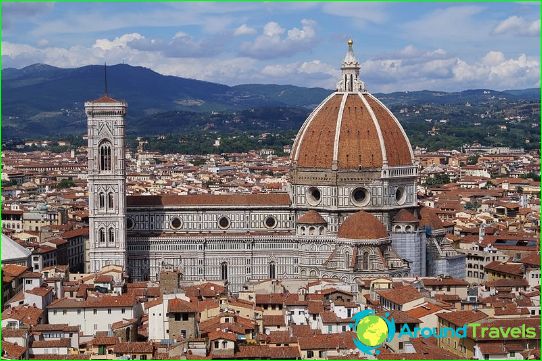 Cathedral of Santa Maria del Fiore
Cathedral of Santa Maria del Fiore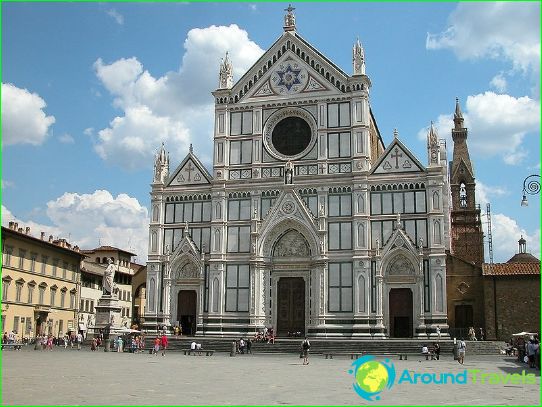 Basilica of Santa Croce
Basilica of Santa Croce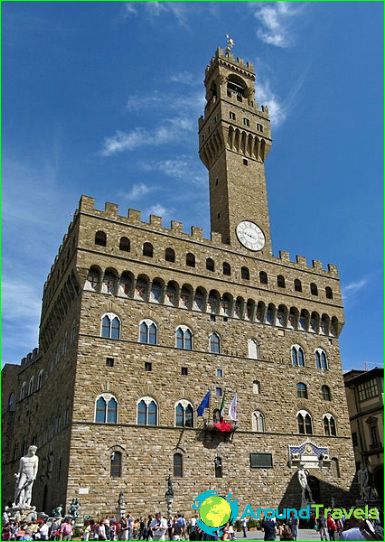 Palazzo Vecchio
Palazzo Vecchio Ponte Vecchio bridge
Ponte Vecchio bridge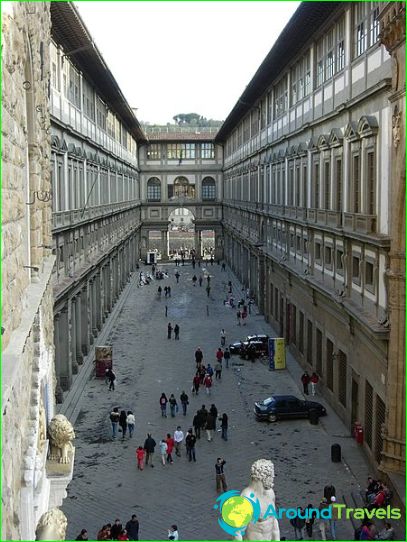 Uffizi Gallery
Uffizi Gallery Palazzo Pitti
Palazzo Pitti